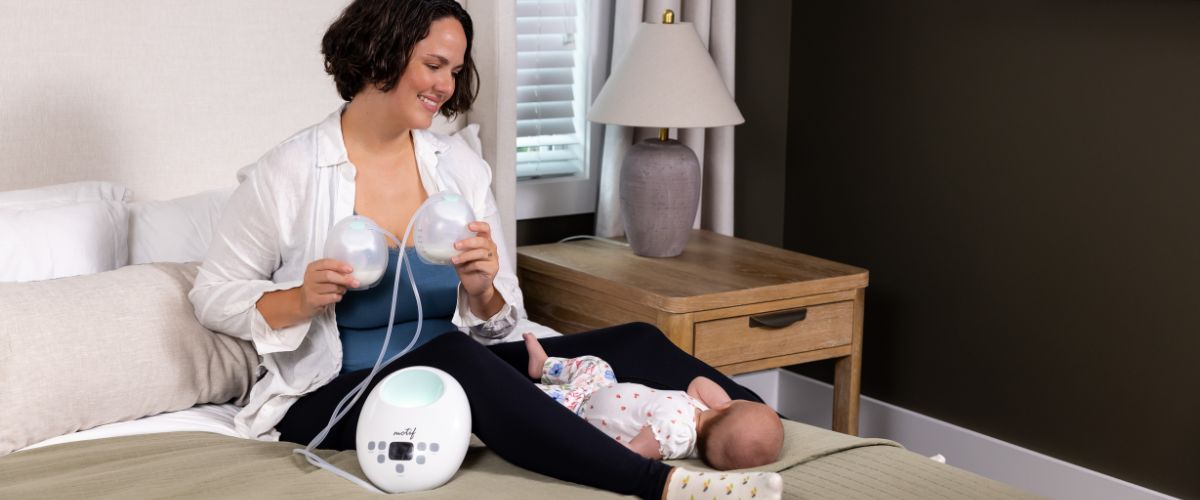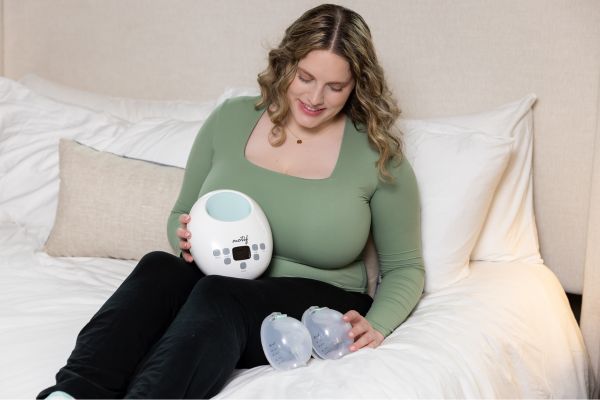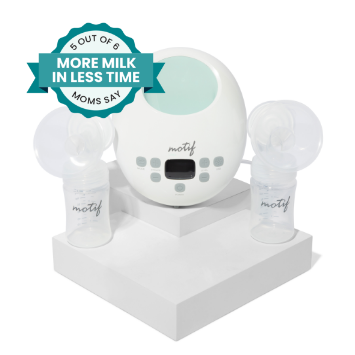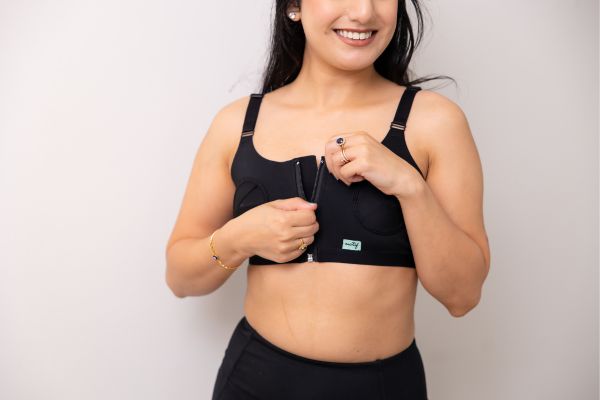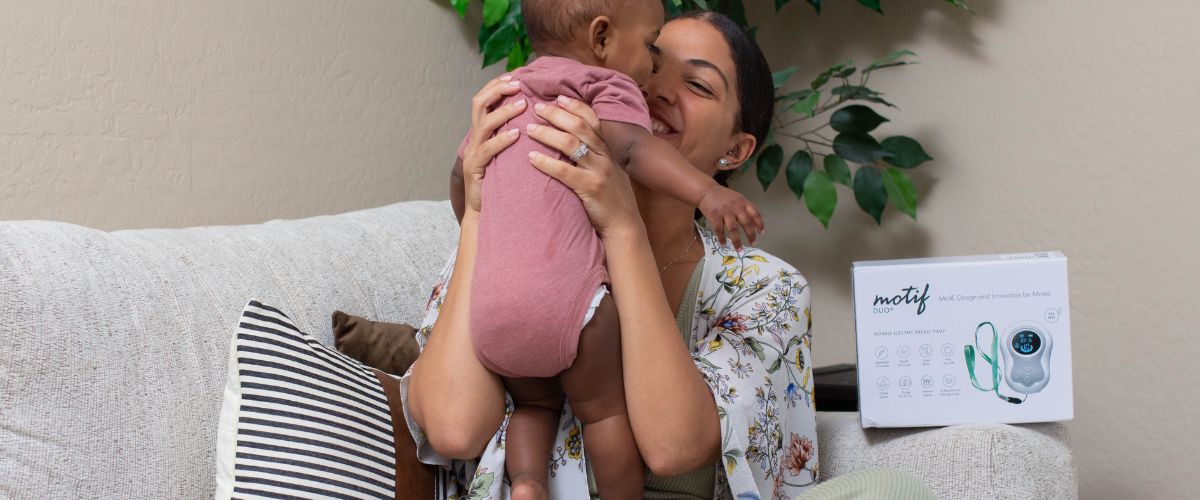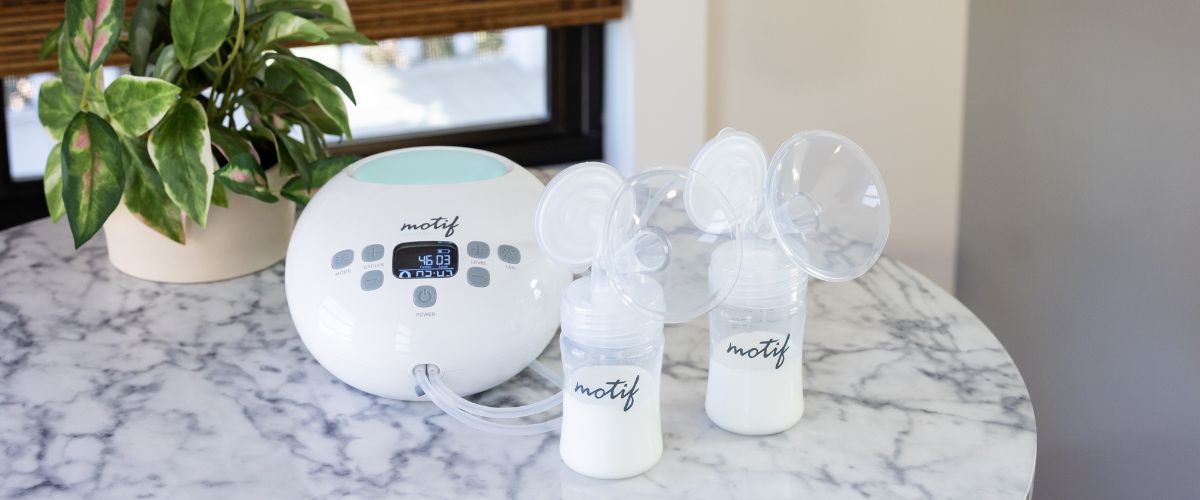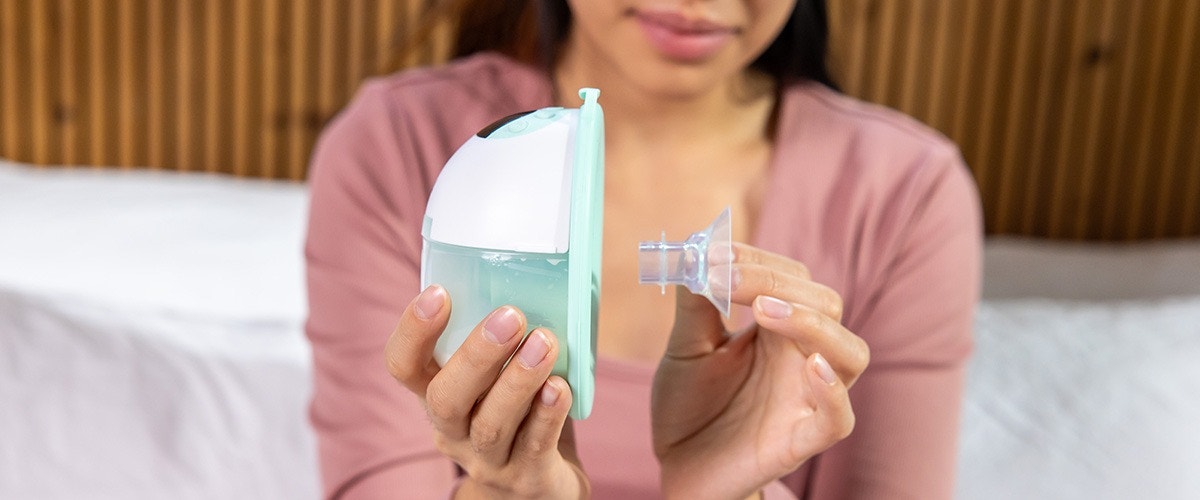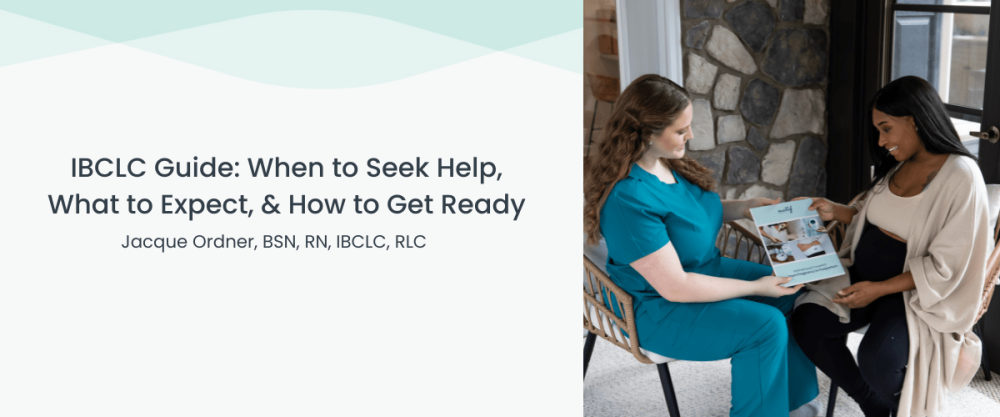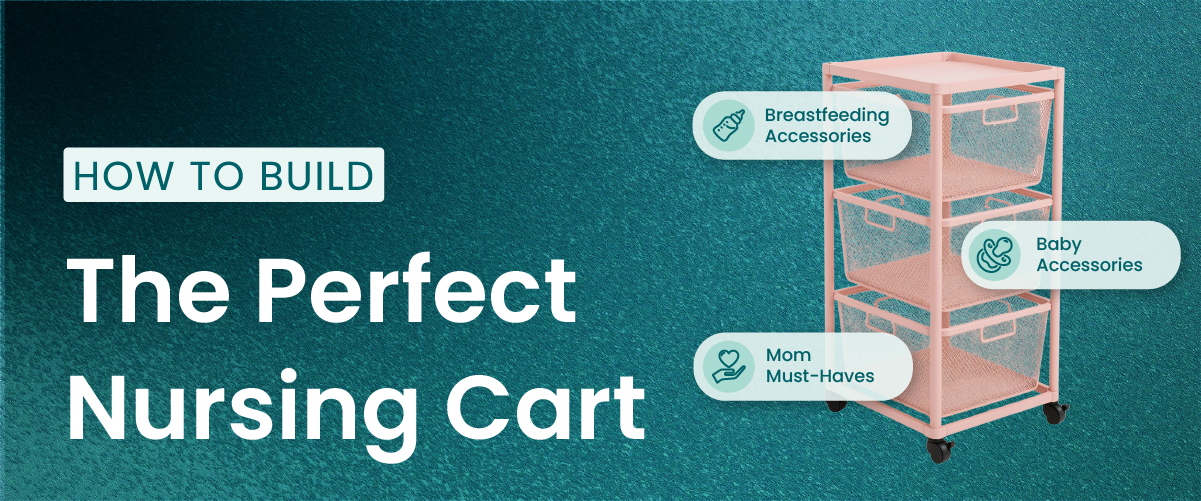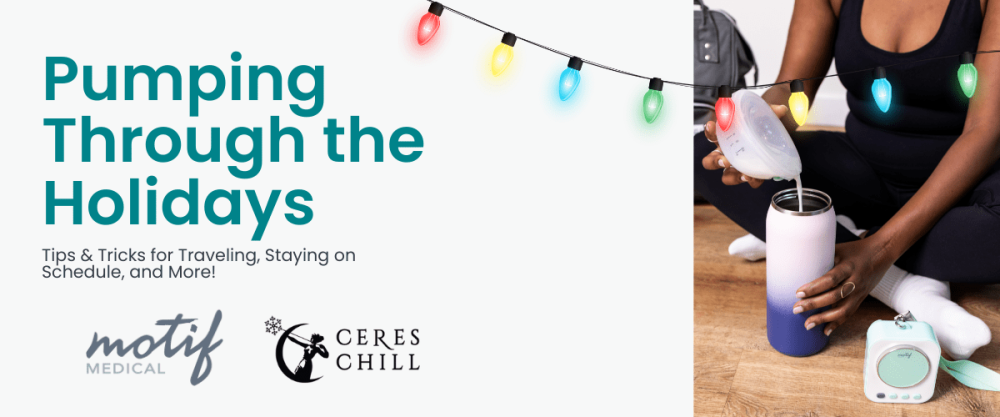What is Exclusive Pumping?
Exclusive pumping, also known as EP, is when breast milk is expressed and fed to a baby rather than through latching and nursing. Expressed milk can be fed via bottle, NG tube, cup, or another alternative feeding method.
Why Do Some Families Choose Exclusive Pumping?
There are many reasons that mothers may end up exclusively pumping. How you choose to feed your baby is a personal decision that should be made based on what fits your family’s wants and needs best. Here are some reasons why families choose to exclusively pump:
Breastfeeding Difficulties
Separation of Mom and Baby
Mom and baby may be separated due to a NICU stay, a health condition that requires mom to be hospitalized, or a shared custody arrangement. The most common scenario for the separation of mother and baby is when the baby goes to the NICU. It is not uncommon for these babies to be fed with NG-tubes, G-tubes, or bottles. Preterm babies and babies with medical challenges may have difficulty feeding from the breast and can easily develop a bottle flow preference.
Multiples
Mothers of multiples may choose to exclusively pump, as this gives them more predictability and control over certain aspects of feeding. Many also prefer exclusive pumping so that members of their support system can help with feedings as well.
Personal Preference
Recently, more mothers are making the choice to exclusively pump from the very first feeding. Many prefer pumping and feeding on a schedule, monitoring their milk output as well as the baby’s intake, and the flexibility of allowing others to feed their baby. Some mothers simply feel uncomfortable with direct breastfeeding.
More Than Milk
It’s important to acknowledge that breastfeeding isn’t just about nutrition. Mothers often have a deep emotional attachment to the vision they had of how breastfeeding would look. If breastfeeding isn’t going as planned, take time to work through any disappointment and grief you might be feeling for the journey you thought you would have. Know that choosing to provide breast milk in ANY amount is a labor of love, and you are so much more than milk! If you are an exclusive pumper, you are a breastfeeding mother. Pumping IS breastfeeding!
What Do I Need for Exclusive Pumping?
High-quality Double Electric Breast Pump
Your primary pump will be what you rely on for milk removal every 2-3 hours. It needs to be powerful, durable, lightweight, and effective. The Motif Luna is an amazing choice for building and maintaining milk supply as an exclusive pumper. If possible, go for the rechargeable battery option, you won’t regret it!
Portable or Wearable Breast Pump
Since you’ll need to pump 8 times per day, having an effective portable or wearable pump can be life-changing. It’s ideal to use your primary pump (double-electric) as much as possible for pumping on the go; the Motif Roam or Motif Aura Glow are must-haves.
Primary Breast Pump = Motif Luna. Secondary Breast Pump = Motif Roam or Motif Aura Glow
Well-Fitted Flanges
Pumping shouldn’t hurt! In fact, pain is a sign that your flange size isn’t quite right. Properly fitted breast pump flanges are key to pumping comfort and optimal milk output. Check out our flange fitting guide here.
Breast Milk Storage Bags
You’ll be storing lots of milk, so think through how you want to rotate through your stash. Good quality milk storage bags are priceless when it comes to protecting your liquid gold!
Cooler and Cold Packs
Since you’ll need to pump on the go, you’ll need a way to store your milk when you’re out and about. Invest in a quality cooler and cold packs to help ensure your milk is stored properly when you don’t have access to a refrigerator.
Hands-Free Pumping Bra
Extra Sets of Pump Parts
Exclusive pumping means LOTS of bottles, flanges, and other pump parts to wash. Having extra sets of parts can save you time and stress.
How to Start Exclusively Pumping
If you know you want to EP right from the beginning, it’s important to get started right away.
Within an hour of your baby’s birth, start hand expressing. Hand expression is ideal for collecting colostrum to feed to your baby because the thick, sticky colostrum is often difficult to express with a breast pump.
After hand expressing, begin pumping for 15-20 minutes. Pumping provides nipple stimulation that triggers the release of oxytocin (the hormone responsible for letdown).
Continue hand expressing and pumping every 2-3 hours around the clock. Shoot for at least 8 hand expression + pumping sessions in 24 hours. These pump sessions might not yield much milk, but they are signaling your body to make more milk in the future.
Your milk should “come in” by day 3-5 after your baby is born. You’ll notice a significant increase in milk volume at this stage. Once your milk is “in” it’s ok to stop hand expressing and just stick to pumping. It’s important to continue pumping every 2-3 hours, 8 times per day.
You’ll likely need to continue pumping every 2-3 hours around the clock until your baby starts to naturally consolidate their sleep for a longer sleep stretch. At this point, as long as your milk supply is stable and your baby is gaining well, it’s ok to go for a single 4-5 hour stretch without pumping overnight..
As your baby gets older and begins to sleep longer stretches, it’s best to consult with an experienced IBCLC (International Board Certified Lactation Consultant) who can help you safely reduce overnight pumping. Cutting out pump sessions too quickly can lead to engorgement, clogged ducts, and even mastitis.
Nancy Morbacher, a pioneer in the IBCLC world, coined the phrase “finding your magic number” in reference to the number of times a mother will need to thoroughly pump in order to keep up her milk supply. This number depends on each mother’s breast storage capacity. Some mothers may need to continue pumping 7-8 times per day, while others may only need to pump 4-5 times per day to maintain an adequate breast milk supply.
When Can I Start Using a Wearable or Portable Breast Pump?
It’s important to use a primary breast pump, like Motif Luna, to help establish an abundant milk supply in the first 4-6 weeks postpartum. As you become more comfortable with pumping and your milk supply increases, it is ok to incorporate a portable or wearable breast pump for times when pumping with your primary pump isn’t feasible. Wearable and portable breast pumps often don’t yield quite the same results as pumping with a high-quality primary pump, but these convenient secondary pump options can make a great complement to your main pump. You can find some great tips for optimizing pumping with a secondary pump HERE and HERE. Remember, it’s always better to pump with a portable or wearable breast pump than to skip a session altogether!
Exclusive Pumping Schedule
-
6:00 am - pump for 20 minutes with Luna
-
Use hands-on pumping to optimize milk output since it’s common to have a bit more milk in the morning.
-
-
8:30 am - pump for 20 minutes with Luna
-
Use a hands-free bra so you can care for the baby while pumping.
-
-
11:30 am - pump for 20 minutes Aura Glow (General Pumping Mode)
-
Using a wearable allows you to eat lunch while pumping.
-
-
2:30 pm - pump for 20 minutes with Luna
-
Use a hands-free bra so you can care for the baby while pumping.
-
-
5:30 pm -pump for 20 minutes Aura Glow (General Pumping Mode)
-
Using a wearable allows you to pump while enjoying dinner.
-
-
8:30 pm - pump with Aura Glow (Cluster Feeding Mode)
-
Using a wearable allows you to be more attentive to your baby at bedtime. The pauses and restarts of stimulation with Cluster Feeding Mode help trigger an oxytocin spike. Nursing newborns naturally cluster feed to cause an oxytocin spike as well.
-
-
11:30 pm - pump with Luna for 20 minutes
-
Skip the hands-free bra and use hands-on pumping to optimize milk output before bed.
-
-
3:00 am - pump with Luna for 20 minutes
Additional Tips You Need to Know as an Exclusive Pumper
Don’t skip pump sessions! It’s ok to be a little flexible with your schedule, but it’s important not to skip sessions. Going too long without removing milk can lead to engorgement, clogged ducts, and mastitis, and can also cause a reduction in milk supply over time. If something comes up that interferes with your normal pumping schedule, try to sneak in a pump session a little earlier or later than your normal time. If that’s not possible, use a few minutes of hand-expression or a quick session with a manual pump (an amazing back-up) to at least express some milk. Expressing some milk is better than none!
Use Paced Bottle Feeding. Paced Bottle Feeding is a technique that is helpful in preventing overfeeding at the bottle. It can also minimize gas and tummy upset because it helps keep the baby from drinking too fast. The key points are to hold your baby in a slightly reclined position and to keep the bottle level with the floor during feeding. If the baby starts to gulp, tip the bottle to slow the flow. Bottle choice is also important. A slow-flow nipple that has a gentle slope (think traffic cone) is ideal for promoting proper oral motor development.
Consider multiple options for cleaning pump parts and bottles. Exclusive pumpers often cite cleaning pump parts as one of the most frustrating parts of exclusive pumping. As we said before, having multiple sets of parts can help, but there are additional options to consider. Microwave steam bags are a convenient way to expedite sterilizing parts. Many bottle sterilizers also have settings for cleaning pump parts. When you’re on the go, consider rinsing parts with bottled water and then using pump wipes or spray to clean when washing isn’t an option. Many EP moms also rely on the fridge hack. This means they rinse their used pump parts and place them in a clean zip-top bag or container in the refrigerator until next use. The CDC does not recommend the fridge hack due to the risk of bacterial contamination.
Information provided in blogs should not be used as a substitute for medical care or consultation.

